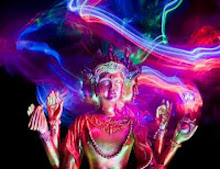
How to strengthen concentration through jhāna with Shaila Catherine
"Concentration"? What does samadhi really mean? The Pali texts describe this quality of mind as "internally steadied, composed and settled, unified." It is a coherent mind, a unification of the mind with the object, a stillness of mind free of distraction, undistractedness, collectedness, and focused attention that produces a profound stability of mind. It is the factor that lands on the meditation object, penetrates it, and stays there. We stay attentive with the object, not dispersed, dissipated, scattered, or agitated. We experience it with cohesion and coherence, internal strength, often very pleasant (states linked to bliss, happiness, equanimity, a joy born of seclusion or withdrawal of the senses) associated with tranquility, calm, ease, peacefulness, stillness, rapture, bliss, deep and profound equanimity. Fixed focus (appana samadhi) is a single focus on any one of a variety of different objects. There is another called momentary concentration (kannica samadhi).
The Buddha in samadhi at Gal Vihara, Sri Lanka
The Jhanas: A Practical Guide to Deep Meditative States
 |
| The Jhanas: A Practical Guide |
Experience new levels of joy, calm, and clarity with this revised and enhanced edition of the bestselling Focused and Fearless.
The Pali word jhana (Sanskrit dhyana) literally means “to meditate.” It also refers to a traditional series of states of meditative absorption, each deeper than the last, in which the mind is undistracted by sensation, thoughts, or moods.
Shaila Catherine’s friendly, wise approach, blended with contemporary examples and pragmatic "how to" instructions that anyone can try, shows meditators (and non-meditators) how to attain these extraordinary states with relative ease.
But jhana practice is about much more than just meditation or concentration [the misleading word most often used to translate samadhi]; it offers a complete path toward bliss, fearlessness, and true awakening.
From the introduction:
 |
| It's so natural, laypeople can reach it with ease. |
Jhanas are states of deep rest, healing rejuvenation, and profound comfort that create a stable platform for transformative insight.
 |
| Beyond Distraction: Five Ways |
This new edition of the meditation classic clarifies crucial points and offers twenty-one additional exercises, making this a great book for both those new to jhana practice and those looking to deepen their practice. The Jhanas: A Practical Guide to Deep Meditative States
- Buddhist Meditation Teacher Shaila Catherine
- Shaila Catherine (Amazon.com)
- AllYouCanBooks.com
- Shaila Catherine, Bhante, Dhamma Centre, March 6, 2021 (Dharma talk); Dhr. Seven, Amber Larson (eds.), Wisdom Quarterly



















































































































































































































































No comments:
Post a Comment